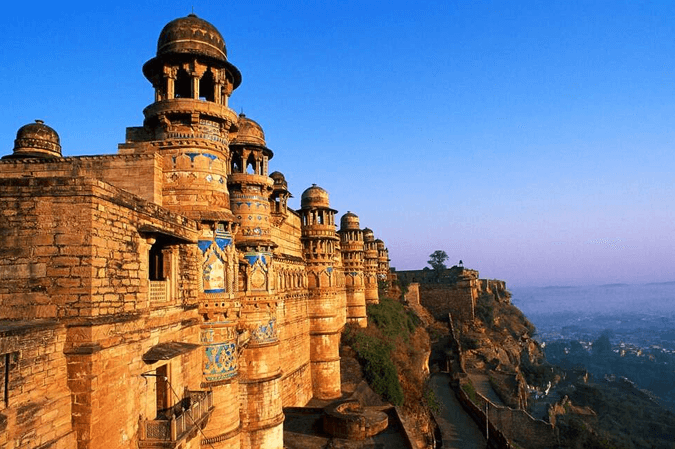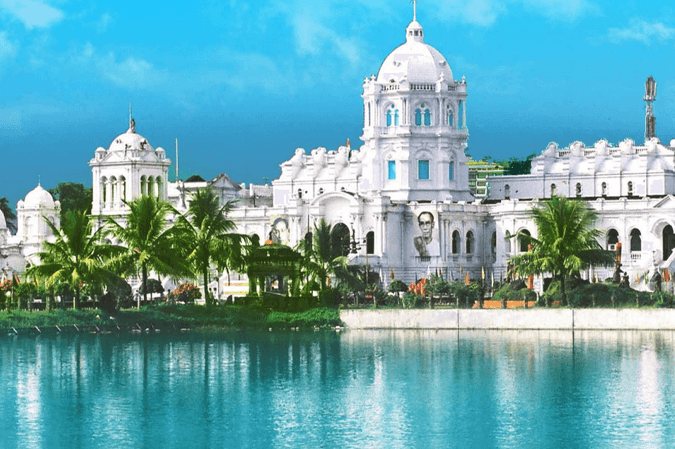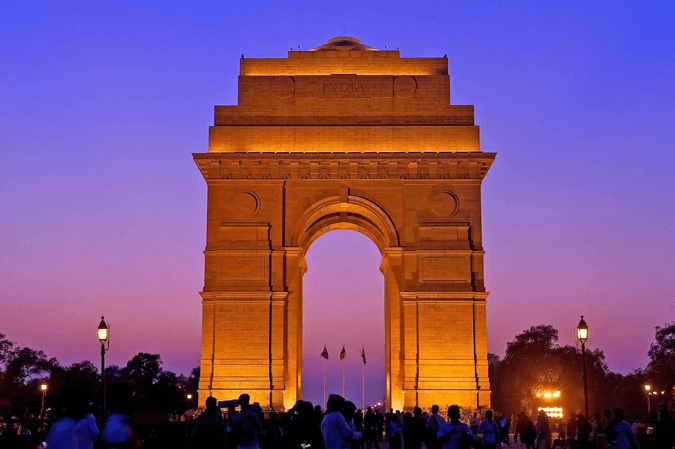History
Madhya Pradesh has a deep historical legacy, influenced by various empires and dynasties over the centuries. The region was part of the ancient Maurya and Gupta Empires. The medieval period saw the rise of the Chandela dynasty, which was known for its architectural marvels like the Khajuraho temples. The state also played a significant role during the Mughal era and later under the Marathas and the British East India Company. After India’s independence, Madhya Pradesh was formed in 1956, merging the former Central Provinces and Berar with the Vindhya Pradesh and Bhopal states.
Landscape and Area
Madhya Pradesh covers an area of 308,350 square kilometers, making it the second-largest state in India by area. The state is characterized by its varied landscape, which includes:
- Forested Hills and Plateaus: The state is largely covered by the Satpura and Vindhya mountain ranges, which are home to several national parks and wildlife sanctuaries.
- Rivers: Major rivers such as the Narmada, Tapi, and Chambal flow through Madhya Pradesh, contributing to its rich natural resources and agricultural productivity.
- Plains and Plateaus: The central part of the state is dominated by fertile plains, which are crucial for agriculture.
Climatic Conditions
Madhya Pradesh experiences a subtropical climate with three distinct seasons:
- Summer: From March to June, temperatures can soar to 45°C or more, with dry and hot conditions.
- Monsoon: From June to September, the state receives substantial rainfall, averaging 1,200 to 1,500 mm annually, which helps replenish the rivers and supports agriculture.
- Winter: From October to February, temperatures range between 10°C to 30°C, with cooler conditions in the northern and central parts.
Historical Places
Madhya Pradesh is home to numerous historical and cultural landmarks:
- Khajuraho Group of Monuments: A UNESCO World Heritage Site known for its stunning temples adorned with intricate erotic sculptures.
- Sanchi Stupa: An ancient Buddhist complex featuring a prominent stupa built by Emperor Ashoka, also a UNESCO World Heritage Site.
- Gwalior Fort: An imposing fort with a rich history, including the famous Saas-Bahu temples and the Gwalior Palace.
- Orchha: Known for its historical palaces and temples, including the Jahangir Mahal and the Chaturbhuj Temple.
- Mandu: Famous for its architectural ruins and monuments from the medieval period, including the Jahaz Mahal and Rani Roopmati Pavilion.
Festivals
Madhya Pradesh celebrates a variety of festivals reflecting its diverse culture:
- Navratri: A major Hindu festival dedicated to the worship of the goddess Durga, celebrated with vibrant dances and rituals.
- Diwali: The festival of lights is celebrated with great enthusiasm across the state.
- Khajuraho Dance Festival: An annual event showcasing classical dance performances against the backdrop of Khajuraho temples.
- Mandu Utsav: A cultural festival held in Mandu featuring music, dance, and local traditions.
- Teej: A festival celebrated by women, marking the arrival of the monsoon season and involving rituals for marital bliss.
Environment and Biodiversity
Madhya Pradesh is known for its rich biodiversity and natural environment:
- National Parks and Wildlife Sanctuaries: The state is home to several notable parks, including Kanha National Park, Bandhavgarh National Park, and Pachmarhi Biosphere Reserve, which are vital for the conservation of wildlife such as tigers, leopards, and various species of deer.
- Forests: The state has extensive forests that support a variety of flora and fauna. These forests are crucial for maintaining ecological balance and supporting local communities.
Society and Culture
Madhya Pradesh’s society is a blend of various ethnic and cultural groups:
- Languages: Hindi is the official language, while other local languages include Marathi, Bundeli, and Malvi.
- Cuisine: The state’s cuisine includes a range of dishes, such as poha, bhutte ka khees, and dal bafla, known for its regional flavors.
- Crafts and Handicrafts: Madhya Pradesh is famous for its traditional crafts, including chanderi and maheshwari sarees, as well as tribal art and handicrafts.
Interesting and Hidden Facts
- The Heart of India: Madhya Pradesh is often referred to as the “Heart of India” due to its central location.
- First National Park: Kanha National Park, established in 1955, was one of the first national parks in India and is renowned for its efforts in tiger conservation.
- Biodiversity Hotspot: The state has a high density of tigers, making it one of the top destinations for wildlife enthusiasts.
- Ancient Temples: The temples of Khajuraho are famous not only for their erotic sculptures but also for their architectural brilliance.
- Tribal Heritage: The state has a rich tribal heritage, with many indigenous communities preserving their unique cultures and traditions.
Sources
- Government of Madhya Pradesh official websites
- Encyclopaedia Britannica
- Ministry of Tourism, India
- Madhya Pradesh Tourism Development Corporation
- WWF India and other environmental organizations
- Historical and cultural studies on Madhya Pradesh
- Image Source: godigit



